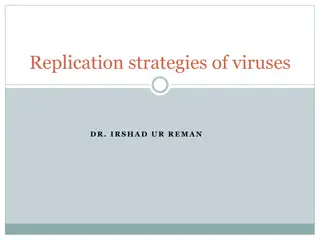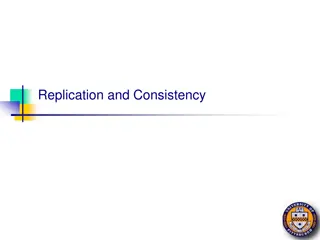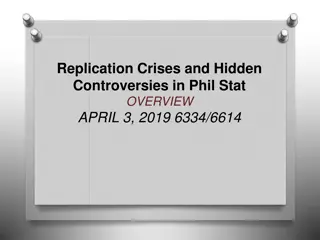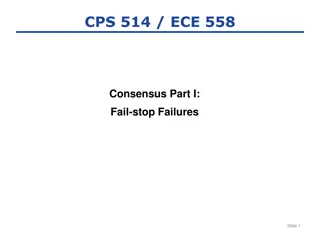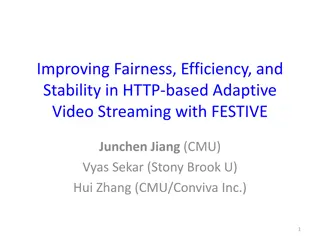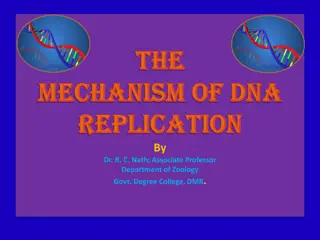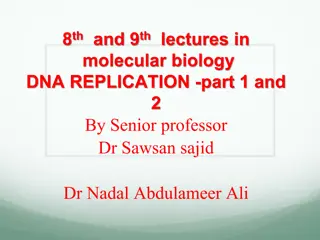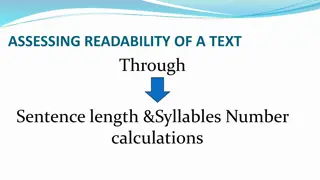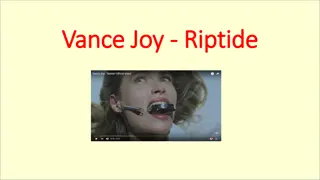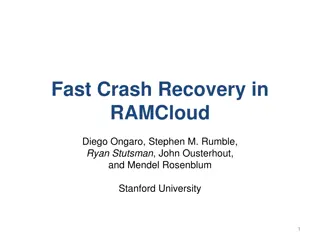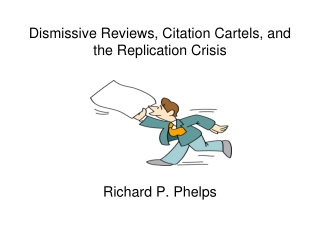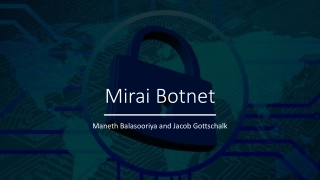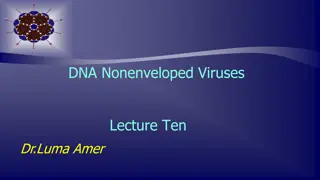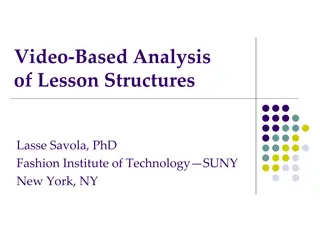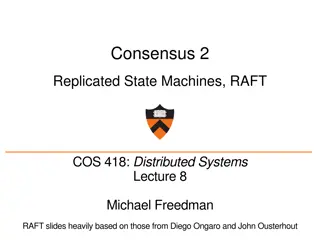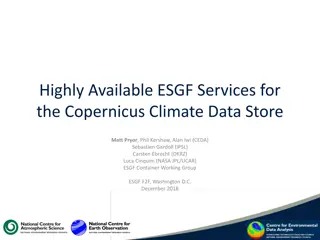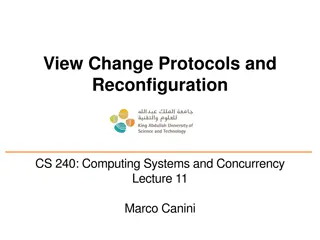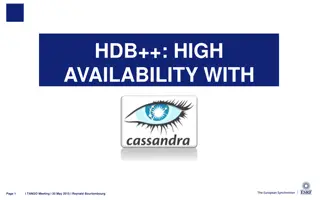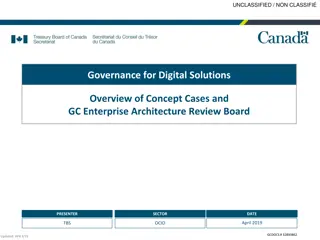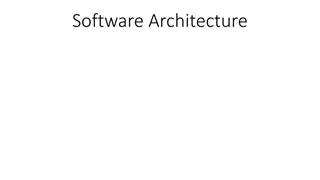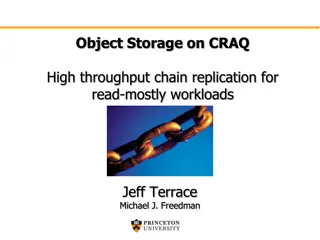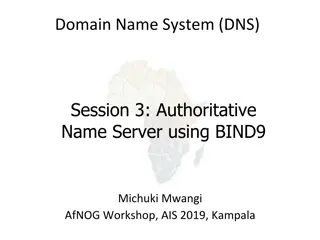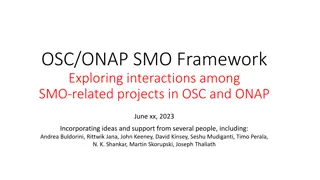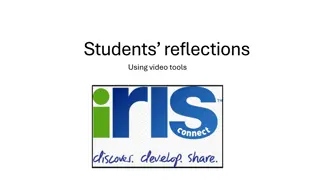Challenges and Solutions in Video Replication and Access over Fog-based Architecture
This presentation delves into the impact of video traffic on the internet, the role of fog devices in video service distribution, characteristics of video popularity, and challenges faced by fog-based schemes. It highlights the need for distributive and lightweight implementations to effectively offload demands. The major problems addressed include limited storage size in fog devices and the ephemeral nature of highly demanded videos.
Download Presentation

Please find below an Image/Link to download the presentation.
The content on the website is provided AS IS for your information and personal use only. It may not be sold, licensed, or shared on other websites without obtaining consent from the author. Download presentation by click this link. If you encounter any issues during the download, it is possible that the publisher has removed the file from their server.
E N D
Presentation Transcript
1 Video Replication and Access over Fog-based Architecture Chang, Zhangyu Supervised by Prof. Gary Chan
2 Introduction System Architecture and Comparison Replication Schemes Contents Video Access Schemes Case Studies Conclusion and Future Directions
3 Impact of Video Traffic on Internet Video contributes to most of the internet traffic the weight is continuously increasing 73% in 2016 / 82% by 2021 (estimated) Huge network resource demand for video service Overall IP traffic grows 24% percent annually Busy-hour Internet traffic is growing more (51% in 2016) Traditional Approach: Content Distribution Networks (CDNs): Not cost-effective Peer-to-Peer Network (P2P): Not reliable New paradigm to offload the demand
4 Video Service over Fog Fog devices: E.g., routers, Wi-Fi Aps, set- top boxes, base station Lightweight but decent power Ubiquitous and close-to-user Fog-based distribution reduces: Load of cloud server Server-to-edge traffic Inter ISP traffic
5 Video Popularity Characteristics Popularity Very skewed for both professionally generated content (PGC) and user generated content (UGC) By storing only 10% of long-term popular videos, a cache can serve 80% of requests Freshness The popularity of hot videos decays very quickly PGC: 90% of the most popular videos traffic are new each day UGC: difficult to predict the popularity of new content Daily Pattern 2 peaks: 2 P.M. and 10 P.M. every day lowest at around 5 A.M.: good time to push new content
6 Challenges for Fog-based Schemes Distributive Fog devices are huge in number and have to collaboratively serve the users Geography-aware It is important to utilize the close-to-user feature to serve the neighbor Popularity-aware Global popular contents have to be pushed into the fog Lightweight implementation Fog device cannot match dedicated server on computation power
7 Major Problems Video Replication Video Access Fog devices are huge in number, but each fog device has only limited storage size A fog device cannot have full replication of all the videos Many fog devices may have the same contents Ephemeral: highly demanded video for a certain duration and then the demand fades Decision affects all users share the same resource What to push and when to push the new contents Wired versus Wireless fog Uncoordinated versus Coordinated replication schemes Wired: reduce the problem size Uncoordinated: based on device s demand Wireless: choice of base stations Coordinated: based on global popularity
8 Solutions Replication schemes Uncoordinated: Variations of LRU / Score-Based Schemes Coordinated: Popularity-Based / Division of Storage Video access schemes Wired Users: Clustering Methods / Game Theory Approaches Wireless Users: Approximation Algorithm / Mathematical Programming Case studies Youku: CDN Based on Smart Routers Thunder Crystal: Crowdsourcing Content Distribution
9 Introduction System Architecture and Comparison Replication Schemes Contents Video Access Schemes Case Studies Conclusion and Future Directions
10 System Architecture of Fog-based Video Network Cloud Layer (Level 1) Push new videos to the fog Reduced number of servers Fog Layer (Level 2) Backbone of the platform Huge in number and close to the users Owner and operator of the fog may not be same Wired & Wireless fog for all the users User Layer (Level 3) Usually get served by fog devices Cloud as the last resort
11 Comparison: versus CDN and P2P
12 Comparison: Merits of Fog vs CDN vs P2P Better proximity Fog device close to the users Cloud only push to some fog devices Service guarantees Full control over fog devices Stable network connections Reduce peer churns Reduced cost Major cost: real estate, power, cooling and human resource Do not exist on fog Coordinated topology More manageable topology Reduce the inter-ISP traffic Better Geography-awareness User contribution Users are willing to buy fog devices for better service Expansion with little cost Free-riding prevention Store the contents even the owner is not interested in them Owner has less turn-off incentive
13 Introduction System Architecture and Comparison Replication Schemes Contents Video Access Schemes Case Studies Conclusion and Future Directions
14 Replication Schemes Replication scheme for fog must be distributive, responsive and easy to implement Uncoordinated replication schemes Each fog device only makes its own decision independently Lack global popularity information Optimality analysis relies on assumptions Coordinated replication schemes A central server will offer global information to each fog device in some way Push the contents directly May ignore the local preference
15 Uncoordinated Schemes Variations of LRU q-LRU: stores the new video content with a probability of q k-LRU: Storage is divided into k hierarchical part, contents demoted step by step until removal Better than LRU if the video popularity distribution follows the Zipf s law Assumptions for optimality: Poisson distribution of request & stead state Score-Based Schemes Age-Based Threshold (ABT): calculate a time to live based on access frequency Information Centric Network: video has special index, frequency based score but the recent access has higher weight
16 Uncoordinated Schemes Parameter to optimize Scheme Objective Methodology Comment Maximize hit probability Video stored in the device Poisson Approximation Assume Zipf s Law LRU-based Improve hit probability Video stored in the device New coding scheme iProxy Heuristics Age-based Threshold Maximize hit probability Video lifetime in the device Poisson Approximation Assume Zipf s Law Fog devices may not have enough processing power to handle all the hit
17 Coordinated Schemes Popularity-Based Schemes: Video content can be proportional to the video popularity Deficit bandwidth performs better than proportional replication if fog devices has heterogeneous Scheduler gives replication probability p or time to live t and broadcast this parameter to all the fog devices New indices (geographic/propagation/social influence) Division of Storage: Divide the fog storage into 2 parts Local/global popularity & PGC/UGC
18 Coordinated Schemes Parameter to optimize Scheme Objective Methodology Comment Not consider bitrate/device capacity Global Popularity Reduce server load Video stored in the device Mathematical modelling Deficit Bandwidth Reduce server load Video stored in the device Mathematical modelling Consider device capacity Last-mile Implementation Reduce traffic cost Probability to store a video Primal-dual approach Comprehensive model Social Video Index Improve hit probability Based on measurement Video indices Heuristics Division of Storage 1 Maximize hit probability Storage Division Support Wired & Wireless users Heuristics Division of Storage 2 Maximize social welfare Storage Division Supermodular game Support social video
19 Introduction System Architecture and Comparison Replication Schemes Contents Video Access Schemes Case Studies Conclusion and Future Directions
20 Video Access Schemes Video access decision is critical to effectively utilize fog network resources and avoid network congestion Multiple replications for the same video content in several fog devices Huge size of the problem to optimize the whole network Number of both the videos and fog devices are huge Facility Location Problem: NP-complete Effectively Solution Reduce the problem size (clustering/ divide and conquer) Find the approximation algorithms
21 Wired User Thousands of devices NP-hard in nature Divide and conquer Brutal force for small-scale Clustering Methods Geographic location/ISP Similarity of popularity Auction-based method with each region MCMF problem for inter- region traffic Game Theory Approaches Between device owners & operators (Stackelberg Game) Between social friends (supermodular game)
22 Wired User Parameter to optimize Scheme Objective Methodology Comment Cluster fog devices 1 Reduce server load Based on measurement How to partition fog devices Sampling & greedy algorithm Linear Cluster fog devices 2 Reduce server load Traffic between clusters 2 schemes can be combined programing & Heuristics Fog owner and CP can cooperate Game theory approach 1 Price to use a fog device Stackelberg Game Total revenue Assume friends share videos Game theory approach 2 Maximize social welfare Supermodular game From which friend to get video
23 Wireless Users Joint optimization of the replication and access problem User may covered by multiple base stations Relative small problem size Approximation Algorithm Facility location problem Cluster user demand Randomized method if user preference differs not much Mathematical Programming Allowing use has probability to get the video from different base stations Use network coding to bypass the NP-hardness of integer linear programming
24 Wireless Users Parameter to optimize Scheme Objective Methodology Comment Minimize server load Replication & Access Approximation of LBS Approximation ratio given JRC-UR BS assisted D2D Minimize server load Replication & Access Monte Carlo optimization Heuristics in nature AP Minimize server load Fog device deployment Integer linear programming With a greedy heuristics deployment Allow user to access many APs An online algorithm Minimize server load Replication & Access Convex programming Minimize server load Replication & Access Linear Use coded content FemtoCaching Programming
25 Introduction System Architecture and Comparison Replication Schemes Contents Video Access Schemes Case Studies Conclusion and Future Directions
26 Youku: CDN Based on Smart Routers Peer Video CDN based on Smart-routers : Subsidized smart-routers Centralized coordinating 4 kinds of servers to manage the smart routers Combining caching with recommendation Push and store home page contents (73%) Push between 0 and 3 A.M. (daily pattern) Do not care about local popularity
27 Thunder Crystal: Crowd-sourcing Content Distribution Crowdsourcing Content Distribution Crowdsourcing system Device owner get monetary return Central Managed Pushing Push new content for content provider Fixed cloud serve budget Popularity decays exponentially Indiscriminate policy Random user access scheme No geography awareness
28 Introduction System Architecture and Comparison Replication Schemes Contents Video Access Schemes Case Studies Conclusion and Future Directions
29 Conclusion Fog-based content distribution: Low operation cost and better quality-of-service Replication: Uncoordinated: simple but no global popularity Coordinated: popularity aware but no preference Video Access Wired user: divide users into areas Wireless user: jointly optimize replication & access Case Studies Youku: combining pushing with recommendation Thunder: crowdsourcing with random pushing and access
30 Future Directions Augmented Reality Combination of real-world and video Location-based service Fog devices for localization and video distribution Video Data Analytics Video from monitoring camera keeps increasing (7 times from 2016 to 2021) Fog devices at the camera side can analyze the video and upload the results or features for less traffic Blockchain Manage the transactions over the Internet Negotiation distributively on network control Any databases can be saved distributively in the fog
31 Thank You! Any Questions?
32 Comments Survey title: VoD-Fog Approaches and data driven comparisons Zhang Qian: Future work shall be consistent with the main problem BB: How to differentiate between Fog & P2P? Many approaches have been used in P2P Many devices (e.g., Set top box) in previous P2P can be regarded as Fog (End user heterogenity) Fog: Large number of medium range devices & Reliable mid-layer for better tractability and billing Presentation skills : needs more Passion
33 Comments (Cont d) P2P Cloud Fog





